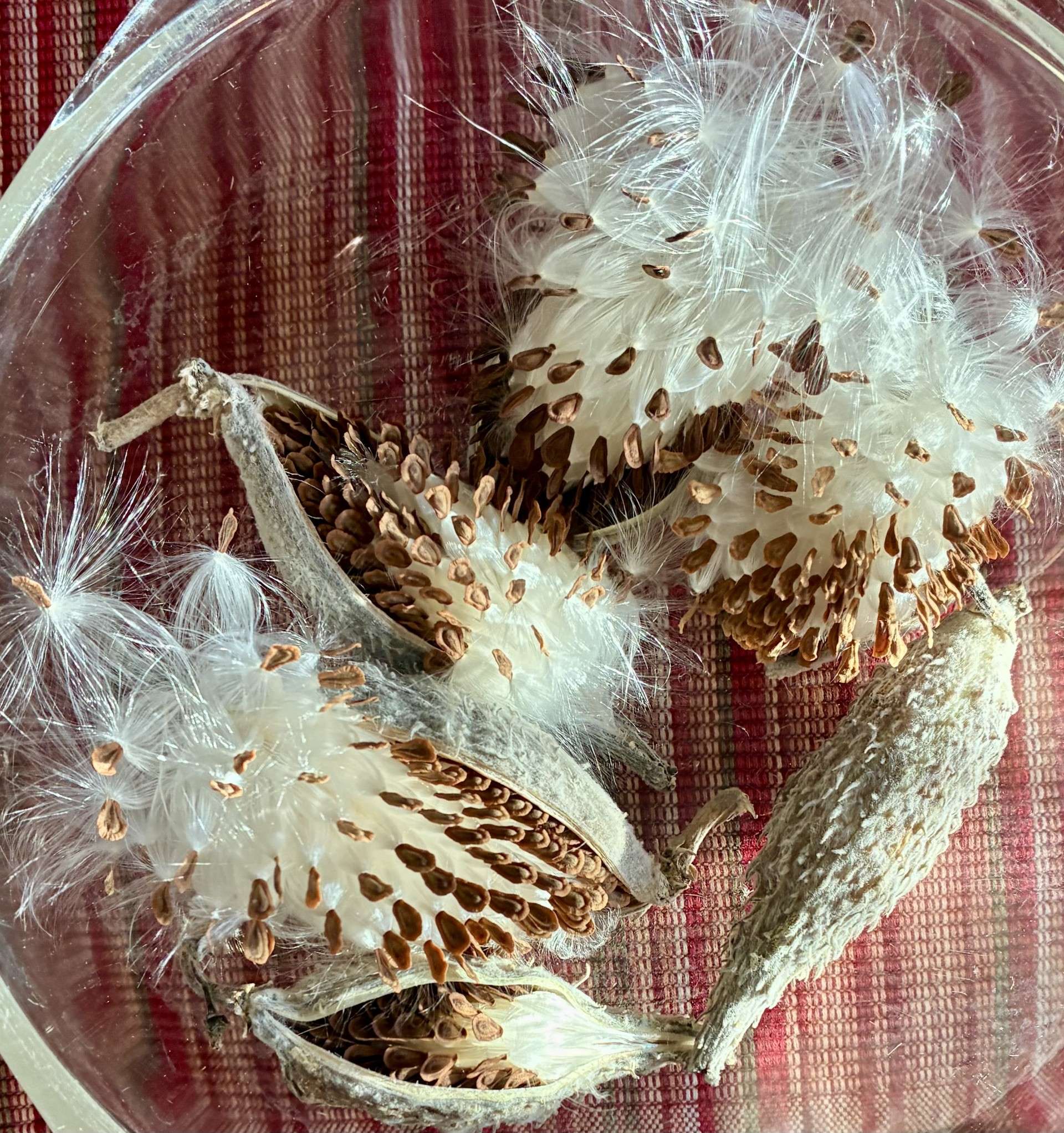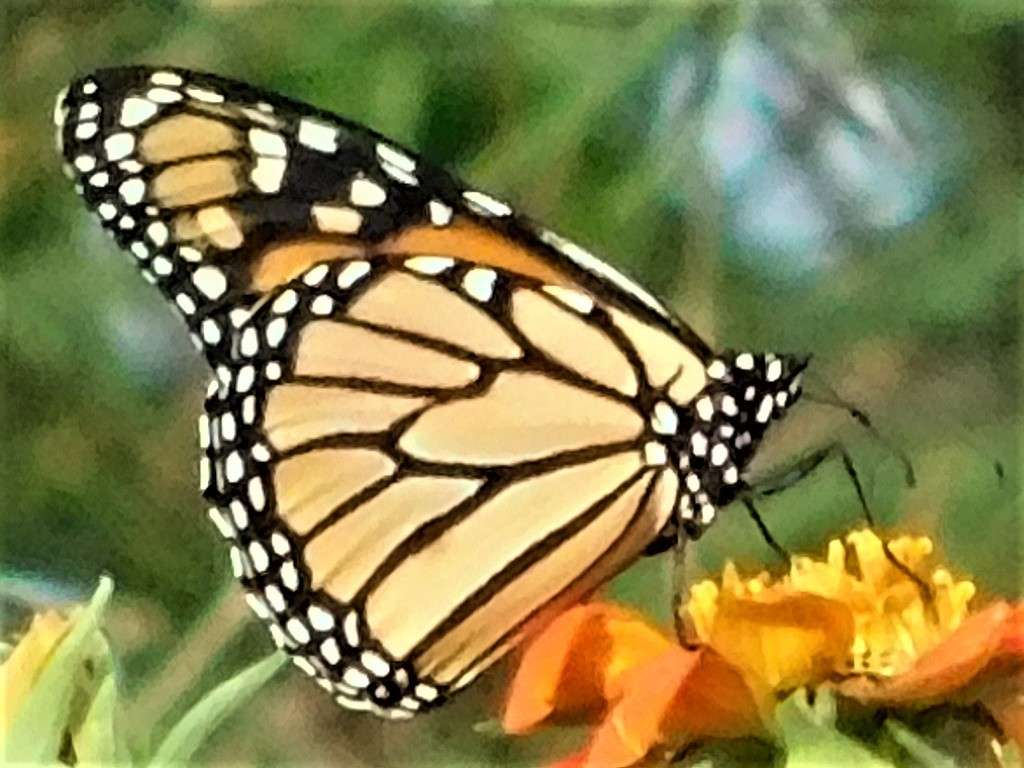
By KAREN MADORIN
Since spring, I’ve eyeballed milkweed plants growing in road ditches. Every time I spied one, I’d think of monarch butterflies searching for meals and nurseries to incubate eggs and nourish larvae.
Eventually, I intended to harvest and plant seed pods to encourage more monarchs to flit amongst our flowers. Glory be, I remembered and now celebrate a bowl full of exploding milkweed fibers and seeds.
Nature and its symbiotic relationships fascinate me, none more than the one between monarch butterflies and the milkweed that graces prairies, roadsides, and open pastures across the mid-United States. Surprisingly, these 2- to 4-foot-tall perennials with globe-shaped leaves and pretty flowers manufacture toxins that drive most critters away. The monarch, however, evolved to utilize those chemicals as food and then internalize them to make themselves undesirable to prey.
For monarchs from the Rockies east, it starts with migration from mountains in Mexico as far as Canada each spring. Along that route, milkweed supports them with pinkish to lavender blooms and offers host plants where they lay pale, miniscule eggs on the underside of those round leaves.
Within days, those eggs hatch and scores of a favorite childhood literary character, "The Very Hungry Caterpillar", emerge. These bottomless pits eat only milkweed leaves.
Due to a DNA mutation, their systems detoxify poisonous chemicals unique to this plant. Over an approximate two-week span, they eat, mature, and molt repeatedly, their colors continually intensifying. All this while they reprocess chemicals that will protect their butterfly incarnation.
I plan to watch from a front row seat once my seeds develop enough to support this monarch stage of life.
Once a caterpillar achieves full size, it attaches to an object and forms a chrysalis. Inside that protective shell, miracles evolve in 10 to 14 days. The one-time caterpillar cells reconstitute themselves into a stunning black, orange, and white adult monarch toxic to prey.

Once wings harden so butterflies can flutter, these summer visitors flit from blossom to blossom feeding on nectar while pollinating plants. Though butterflies nourish themselves with various blooms, milkweed remains essential to monarch survival as a nursery host plant for egg laying, caterpillar food, and creating toxic wings.
Nature’s design astounds me.
Milkweed with its known cardiac glycosides is monarch larvae’s only food. During their development, that potent chemical cocktail collects in striped, pillowy caterpillar bodies—later becoming part and parcel of designer orange, black, and white wings as well as butterfly heads, thoraxes, and abdomens.
When creatures up the food chain consume a monarch, they suffer anything from diarrhea to cardiac arrest. In the animal kingdom, devouring orange-winged insects is a no-no. Some species like the Viceroy evolved to mimic this protective coloring.
What a spectacular symbiotic match between a unique plant with exploding seed pods to monarchs that migrate across this milkweed-rich region twice a year! To utilize that toxin-laden plant as a protective nursery host to creatures immune to those poisons is science fiction on steroids.
Double the amazement with the fact those chemicals accumulate and repurpose themselves in brilliant orange wings so predators know to avoid these pollinators.
Design by the Master’s hand dazzles me every time I discover it. Here’s hope for even more milkweed seeds following this year’s planting.
Karen Madorin is a retired teacher, writer, photographer, outdoors lover, and sixth-generation Kansan.






